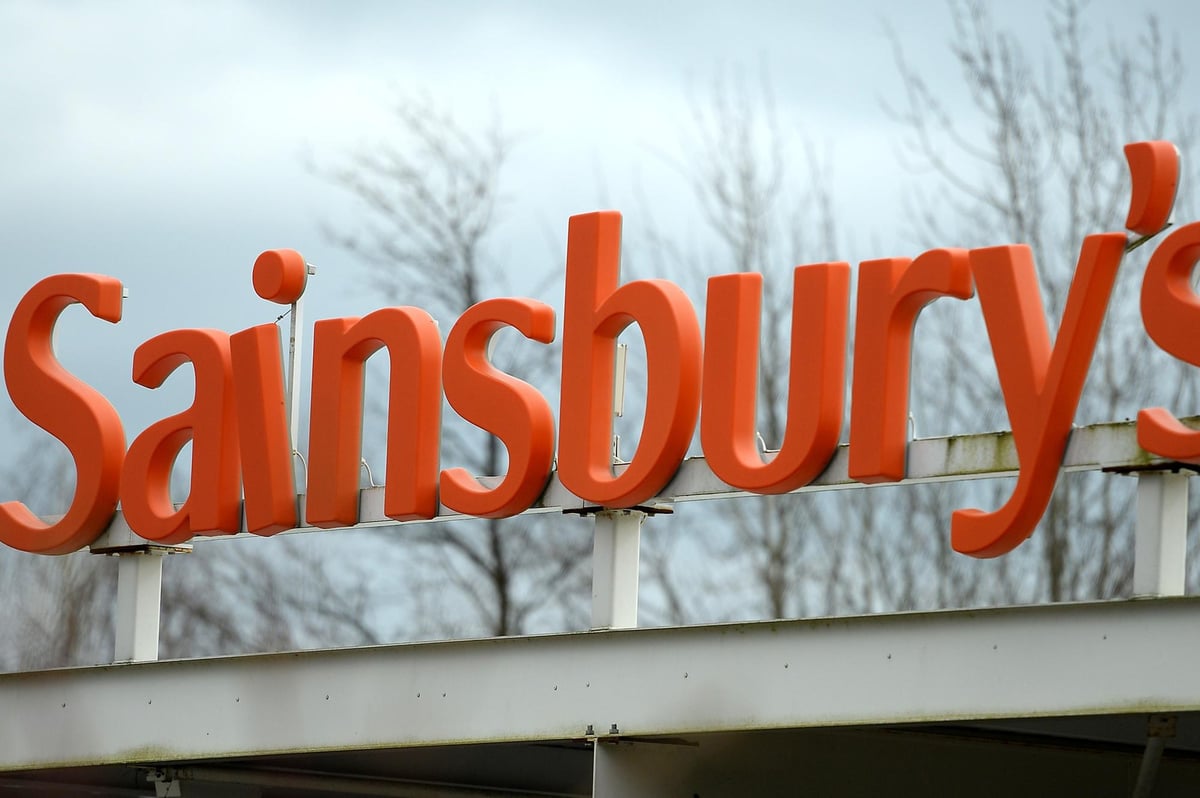By Scott Reid
Supermarket major Sainsbury’s has revealed a jump in sales and cheered its highest market share for almost a decade. The UK’s second largest supermarket chain, behind market giant Tesco, said total sales, excluding fuel, rose by 4.9 per cent in the 16 weeks to June 21, compared with the year before. Grocery sales lifted by 5 per cent in what is the group’s first quarter, with growth of 4.2 per cent for general merchandise and clothing, while the Argos business saw sales rise by 4.4 per cent. On a like-for-like basis, excluding fuel and VAT, group sales rose by 4.7 per cent in the best performance for at least a year. The chain said it had achieved its highest market share since 2016, noting that it had grown share for three years in a row. But the figures come amid further signs of sticky food price inflation, with the latest BRC (British Retail Consortium)-NIQ Shop Price Index figures showing food prices were 3.7 per cent higher year-on-year in June, up from a 2.8 per cent rise in May. Simon Roberts, chief executive of Sainsbury’s, said: “We’re delivering our strongest ever customer offer and many more people are choosing us for their main grocery shop. “We know how important it is that we provide consistently great value and we have built further on our strong competitive position, improving our prices against all key competitors year-on-year. “We’re now offering even more opportunities for customers to save on the items they buy most often through the biggest Aldi Price Match commitment in the market, covering around 800 everyday essentials. As a result, our Value for Money customer satisfaction scores are the highest they have ever been,” he added. The group said strong first quarter performers included Taste the Difference fresh food, which saw sales surge 20 per cent as customers snapped up picnic and deli ranges in the sunny spring and early summer weather. Tu Clothing sales jumped 8 per cent, driven by a 13 per cent leap for womenswear, which the group put down to better design and strong availability. Its Argos division also enjoyed a sales bounce back, with growth increasing to 4.4 per cent from just 1.9 per cent in the previous three months – the second quarter in a row of rising sales. It said trading was helped by “warm and dry weather against a weak comparative”. The firm told investors that it was making progress on revamp efforts at the Argos business, focusing on driving more shopping visits and higher basket sizes. Sainsbury’s also confirmed it was on track with guidance for the full-year, which is set to see underlying operating profits remain flat at around £1 billion as stronger sales volumes are expected to be offset by weaker profitability amid investment in price cuts. It said: “Profit delivery will be supported by continued growth in Nectar profit contribution and industry-leading cost saving delivery and will be weighted more towards the second half versus last year.” Roberts added: “We have great momentum, growing faster than the market for three consecutive years and we are well set to deliver another strong performance over the summer.” Reaction to the trading update from City analysts and retail commentators was largely positive. Zoe Gillespie, wealth manager at RBC Brewin Dolphin, said: “Despite the intensely competitive UK groceries market, Sainsbury’s is performing admirably well. The supermarket has posted its highest market share in almost a decade and is delivering reasonable growth in sales, against a challenging backdrop. “The shares have risen around a quarter since hitting their lowest point since 2023 during April, as the market’s concerns about Sainsbury’s’ ability to keep pace with lower cost competitors took their toll. But Sainsbury’s is proving those doubts wrong with a strategy focused on customer loyalty, price matching the likes of Aldi, and saving costs – an approach that is beginning to yield results.” Pinching Aarin Chiekrie, equity analyst at investment platform Hargreaves Lansdown, said Sainsbury’s was continuing to “pinch market share off the competition”. “Despite the top line moving higher, recent changes to employers’ national insurance and minimum wages are set to bring at least £140 million of extra costs this year,” he added. “Sainsbury’s is doing what it can to trim costs throughout the business, including closing its in-store cafes and streamlining behind-the-scenes operations, but the group’s guidance still points to full-year underlying retail profits remaining broadly flat at around £1bn. “Trading, so far, has been promising, and while it’s still early in the group’s financial year, signs of an all-out price war among the major supermarkets hasn’t materialised. If that remains the case through the rest of the year, the current profit guidance looks a touch conservative, so there could be some positive surprises for investors who are willing to remain patient.” Julie Palmer, a partner at business recovery consultancy Begbies Traynor, said: “The name of the game in the supermarket world is market share and, to carry on enticing customers as it has been doing recently, Sainsbury’s will need to continue to innovate at pace. “The retailer has had a strong start to the year and continued to take on the supermarket discounters at their own game by placing an emphasis on improving its value offer. Its Aldi Price Match commitment is still the biggest in the market and the approach is sitting well with consumers.”
